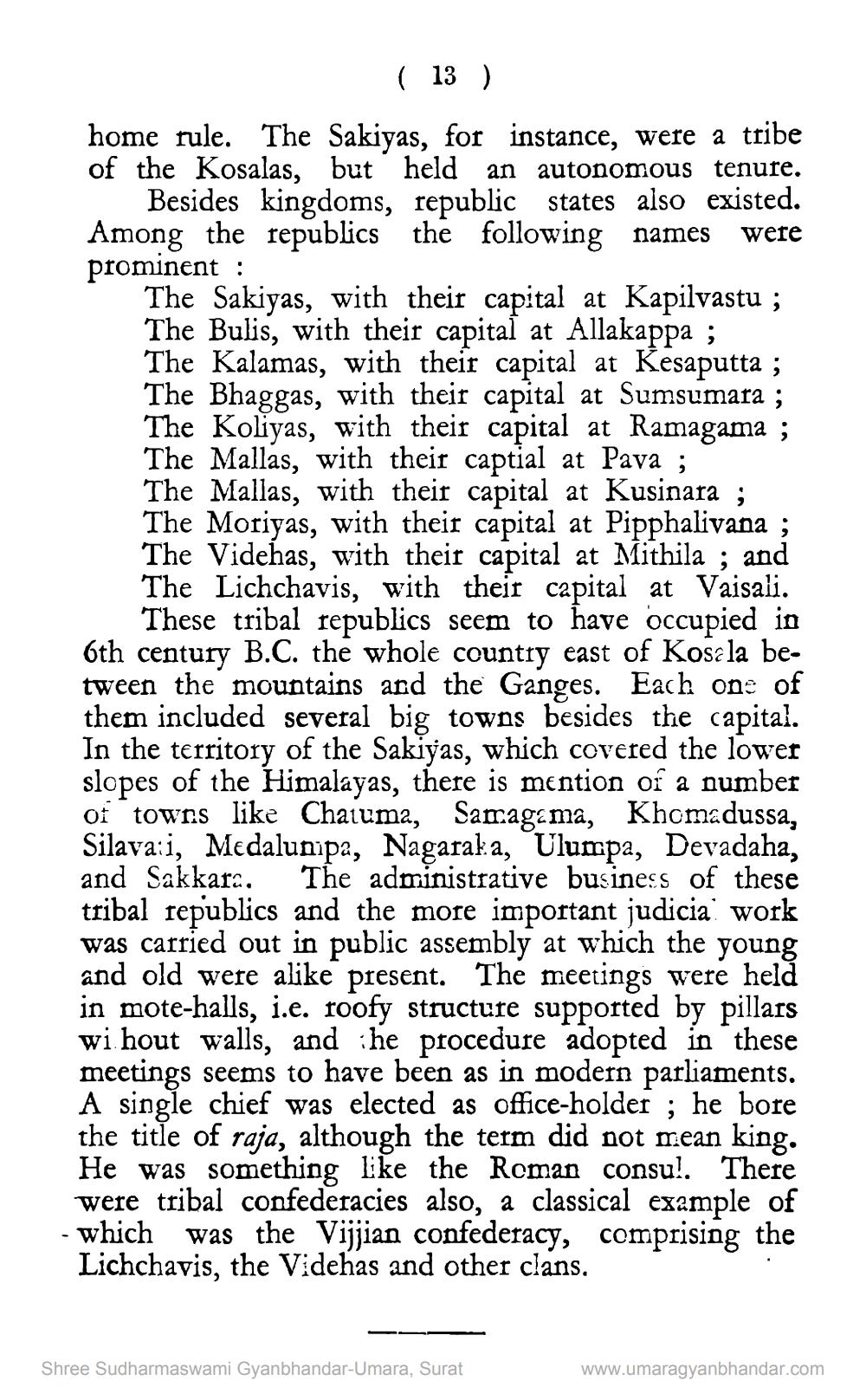________________
( 13 )
home rule. The Sakiyas, for instance, were a tribe of the Kosalas, but held an autonomous tenure.
Besides kingdoms, republic states also existed. Among the republics the following names were prominent :
The Sakiyas, with their capital at Kapilvastu ; The Bulis, with their capital at Allakappa ; The Kalamas, with their capital at Kesaputta ; The Bhaggas, with their capital at Sumsumara ; The Koliyas, with their capital at Ramagama ; The Mallas, with their captial at Pava; The Mallas, with their capital at Kusinara ; The Moriyas, with their capital at Pipphalivana ; The Videhas, with their capital at Mithila ; and The Lichchavis, with their capital at Vaisali.
These tribal republics seem to have occupied in 6th century B.C. the whole country east of Kosala between the mountains and the Ganges. Each one of them included several big towns besides the capital. In the territory of the Sakiyas, which covered the lower slopes of the Himalayas, there is mention of a number of towns like Chaluma, Sarragama, Khomadussa, Silavai, Medalunipa, Nagaraka, Ulumpa, Devadaha, and Sakkara. The administrative business of these tribal republics and the more important judicia work was carried out in public assembly at which the young and old were alike present. The meetings were held in mote-halls, i.e. roofy structure supported by pillars wi hout walls, and he procedure adopted in these meetings seems to have been as in modern parliaments. A single chief was elected as office-holder ; he bore the title of raja, although the term did not mean king. He was something like the Roman consu!. There were tribal confederacies also, a classical example of - which was the Vijjian confederacy, comprising the Lichchavis, the Videhas and other clans.
Shree Sudharmaswami Gyanbhandar-Umara, Surat
www.umaragyanbhandar.com




